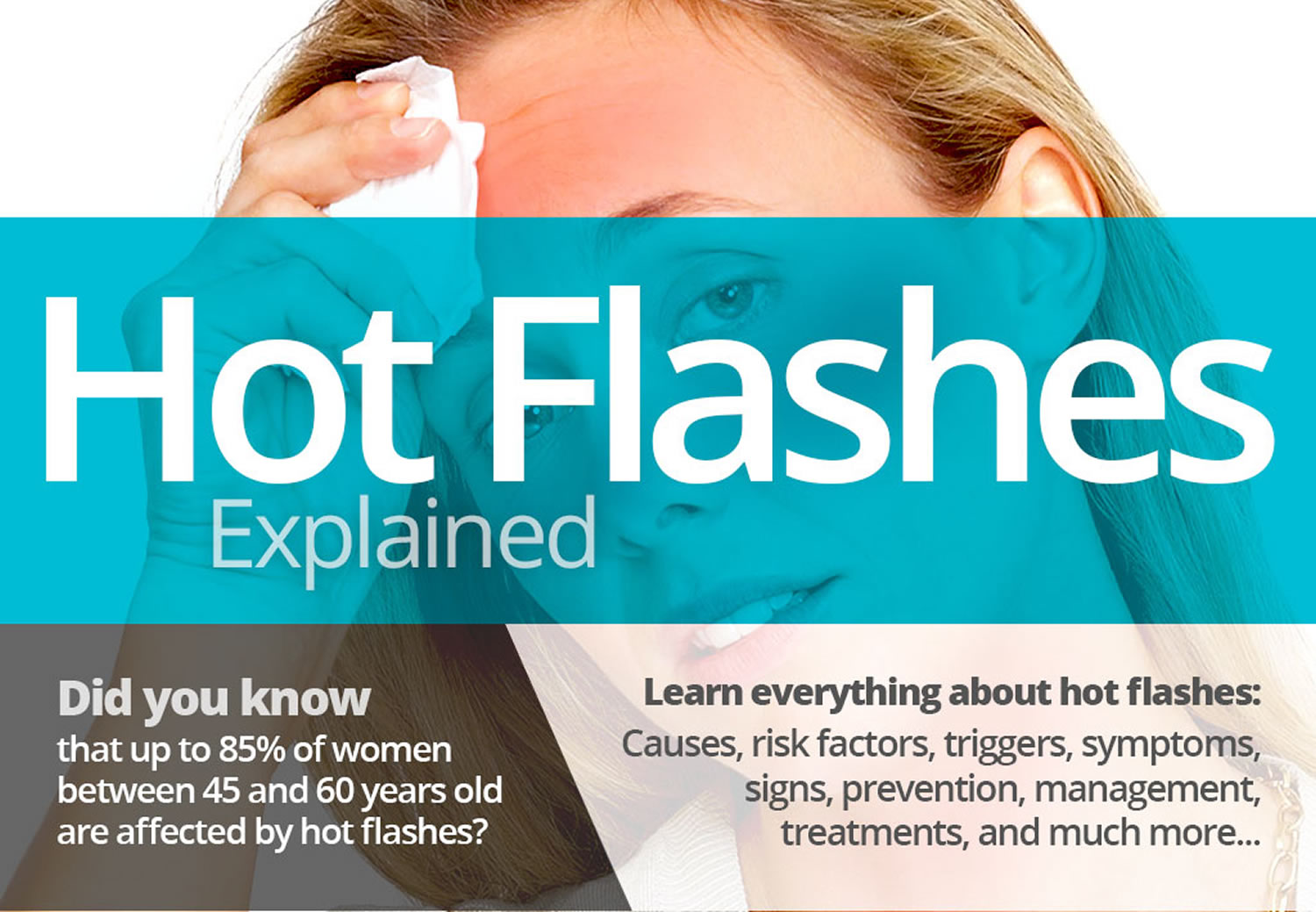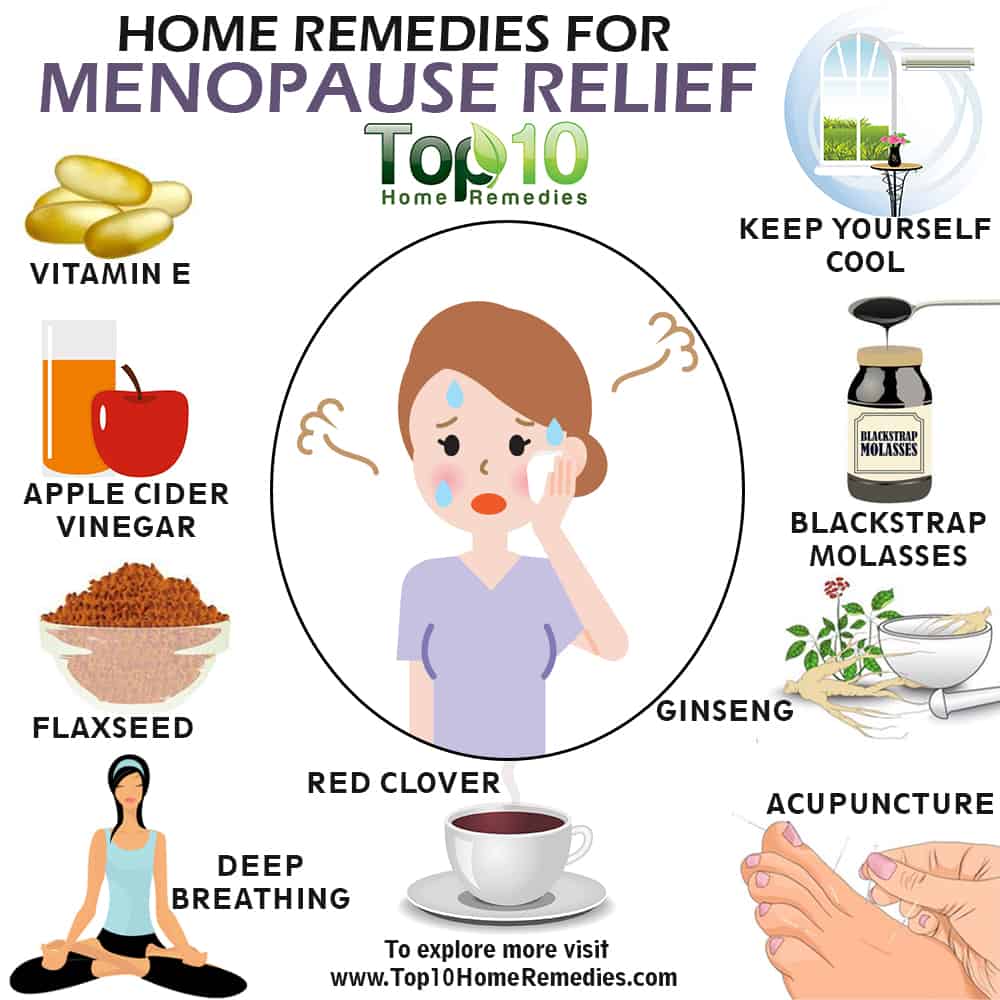As natural cures for hot flashes take center stage, this opening passage beckons readers into a world crafted with expertise and care, ensuring a reading experience that is both absorbing and distinctly original.
Hot flashes, a common symptom of menopause, can significantly impact individuals’ well-being. Understanding the causes and exploring natural remedies can empower individuals to manage their symptoms effectively.
Introduction to Hot Flashes

Hot flashes, also known as vasomotor symptoms, are a common experience for individuals, particularly during perimenopause and menopause. These sudden sensations of heat and flushing typically occur in the upper body, face, and neck, and can be accompanied by sweating, chills, and heart palpitations.
Hot flashes are primarily caused by the body’s response to declining estrogen levels during the menopausal transition. Estrogen plays a crucial role in regulating body temperature, and its decrease can lead to imbalances in the body’s thermoregulatory system. Other factors that may contribute to hot flashes include stress, certain medications, and medical conditions such as thyroid disorders.
Impact of Hot Flashes on Well-being
Hot flashes can significantly impact an individual’s well-being, both physically and emotionally. Physically, hot flashes can disrupt sleep patterns, leading to fatigue and irritability. They can also cause discomfort, embarrassment, and interfere with daily activities.
Emotionally, hot flashes can trigger anxiety, mood swings, and difficulty concentrating. Some individuals may also experience a decrease in self-esteem and confidence due to the physical and emotional challenges associated with hot flashes.
Natural Remedies for Hot Flashes
Hot flashes are a common symptom of menopause, affecting up to 85% of women. While there are various prescription medications available to treat hot flashes, many women prefer to explore natural remedies due to concerns about side effects or a desire for a more holistic approach.
This article provides a comprehensive overview of natural remedies for hot flashes, including their benefits and potential side effects.
Herbal Remedies
Certain herbs have been shown to have estrogen-like effects, which can help reduce hot flashes. These include:
- Black Cohosh:Studies have found that black cohosh can effectively reduce hot flash frequency and severity. It is generally well-tolerated, but may cause side effects such as stomach upset and headache.
- Red Clover:Red clover contains isoflavones, which have estrogen-like properties. It has been shown to reduce hot flashes and improve sleep quality.
- Dong Quai:Dong quai is a traditional Chinese herb that has been used for centuries to treat menopausal symptoms. It is believed to balance hormones and reduce hot flashes.
Dietary Modifications for Hot Flashes: Natural Cures For Hot Flashes
Diet plays a crucial role in managing hot flashes, a common symptom experienced by individuals during perimenopause and menopause. Specific dietary recommendations can help reduce the frequency and severity of these uncomfortable episodes.
Certain foods may trigger hot flashes by increasing body temperature or stimulating the nervous system. Avoiding these triggers can be beneficial in managing symptoms.
Foods to Avoid
- Spicy foods:Capsaicin, a compound found in spicy peppers, can raise body temperature and induce sweating, leading to hot flashes.
- Caffeine:Caffeine can stimulate the nervous system and increase heart rate, which can contribute to hot flashes.
- Alcohol:Alcohol can dilate blood vessels, causing a sudden drop in blood pressure and triggering hot flashes.
- Processed foods:Processed foods often contain high levels of sodium and saturated fats, which can contribute to inflammation and worsen hot flashes.
Foods to Include
Incorporating certain foods into your diet can help reduce the severity and frequency of hot flashes:
- Soy products:Soy contains isoflavones, which are plant-based compounds that mimic estrogen and may help alleviate hot flashes.
- Flaxseeds:Flaxseeds are rich in lignans, which have been shown to reduce hot flash frequency and duration.
- Fruits and vegetables:Fruits and vegetables are rich in antioxidants and phytoestrogens, which can help regulate body temperature and reduce inflammation.
- Whole grains:Whole grains provide fiber, which helps regulate blood sugar levels and reduce the risk of sudden blood sugar drops that can trigger hot flashes.
By making dietary modifications and avoiding trigger foods, individuals can effectively manage hot flashes and improve their overall well-being during perimenopause and menopause.
Lifestyle Changes for Hot Flashes

Hot flashes can be exacerbated by certain lifestyle factors. Identifying and addressing these triggers can help alleviate the severity and frequency of hot flashes.
Adopting healthy lifestyle habits can significantly reduce the impact of hot flashes. This includes managing stress, practicing good sleep hygiene, and engaging in regular exercise.
Stress Management
Stress is a common trigger for hot flashes. Implementing stress-reducing techniques can help mitigate their occurrence.
- Mindfulness and Meditation:Practicing mindfulness techniques, such as deep breathing exercises or meditation, can calm the mind and reduce stress levels.
- Yoga and Tai Chi:These mind-body practices combine physical activity with relaxation techniques, promoting stress reduction and overall well-being.
- Spending Time in Nature:Immersing oneself in natural surroundings has been shown to reduce stress and improve mood.
Sleep Hygiene
Establishing good sleep hygiene practices can improve sleep quality and reduce hot flashes at night.
- Regular Sleep Schedule:Maintaining a consistent sleep-wake cycle, even on weekends, helps regulate the body’s natural sleep-wake rhythm.
- Creating a Relaxing Bedtime Routine:Engaging in calming activities before bed, such as reading, taking a warm bath, or listening to soothing music, can promote relaxation and prepare the body for sleep.
- Optimizing the Sleep Environment:Ensuring the bedroom is dark, quiet, and cool can create an optimal sleep environment.
Exercise
Regular exercise can improve overall health and well-being, which can positively impact hot flash symptoms.
- Aerobic Exercise:Activities such as walking, swimming, or cycling can help reduce stress, improve sleep quality, and regulate body temperature.
- Strength Training:Building muscle mass can help increase metabolism and improve overall fitness, potentially reducing the severity of hot flashes.
- Flexibility Exercises:Stretching and yoga can improve circulation and reduce muscle tension, contributing to overall relaxation.
Herbal Remedies for Hot Flashes
Herbal remedies have been used for centuries to alleviate hot flashes. Some herbs have been found to be particularly effective in reducing the frequency and severity of these episodes.
It is important to note that herbal remedies should not be used as a substitute for medical treatment. If you are experiencing hot flashes, it is important to consult with your doctor to rule out any underlying medical conditions.
Specific Herbs for Hot Flashes
- Black cohosh: This herb has been shown to be effective in reducing hot flashes in some women. It is thought to work by binding to estrogen receptors in the body, which can help to regulate hormone levels.
- Red clover: This herb contains isoflavones, which are plant compounds that have estrogen-like effects. Red clover has been shown to be effective in reducing hot flashes in some women, but more research is needed.
- Ginseng: This herb has been shown to have a number of health benefits, including reducing hot flashes. It is thought to work by improving blood circulation and reducing stress.
- Chasteberry: This herb has been shown to be effective in reducing hot flashes in some women. It is thought to work by regulating hormone levels.
- Evening primrose oil: This oil is a rich source of gamma-linolenic acid (GLA), which is a fatty acid that has been shown to have a number of health benefits, including reducing hot flashes.
How to Prepare and Use Herbal Remedies Safely and Effectively
Herbal remedies can be prepared in a variety of ways, including teas, tinctures, and capsules. It is important to follow the directions on the product label carefully. Some herbs can interact with other medications, so it is important to talk to your doctor before taking any herbal remedies.
Herbal remedies can be effective in reducing hot flashes, but they are not a cure. If you are experiencing hot flashes, it is important to talk to your doctor to rule out any underlying medical conditions and to discuss the best treatment options for you.
Acupuncture for Hot Flashes
Acupuncture is a traditional Chinese medicine technique that involves inserting thin needles into specific points on the body. It is believed to work by stimulating the body’s natural healing mechanisms and promoting balance.Acupuncture may be beneficial for hot flashes by reducing the frequency and severity of these symptoms.
Studies have shown that acupuncture can help regulate hormone levels, improve circulation, and reduce stress, all of which can contribute to hot flashes.
Specific Acupuncture Points for Hot Flashes
Several acupuncture points are commonly used to treat hot flashes, including:
- Liver 3: This point is located on the top of the foot, between the big toe and second toe.
- Spleen 6: This point is located on the inside of the leg, four finger-widths above the ankle bone.
- Kidney 3: This point is located on the inside of the ankle, just below the ankle bone.
- Heart 7: This point is located on the inside of the wrist, two finger-widths below the wrist crease.
Finding a Qualified Acupuncturist
When choosing an acupuncturist, it is important to find someone who is licensed and experienced in treating hot flashes. You can ask your doctor for recommendations or search online for acupuncturists in your area.
Relaxation Techniques for Hot Flashes

Hot flashes can be distressing and disruptive, but relaxation techniques offer effective ways to manage them. By calming the mind and body, relaxation techniques reduce the intensity and frequency of hot flashes.
Deep Breathing Exercises
Deep breathing exercises promote relaxation by regulating the breath and calming the nervous system. To practice:
- Sit or lie in a comfortable position.
- Inhale slowly and deeply through your nose, filling your lungs completely.
- Hold your breath for a few seconds.
- Exhale slowly and completely through your mouth.
- Repeat for several minutes.
Progressive Muscle Relaxation
Progressive muscle relaxation involves tensing and releasing different muscle groups to reduce tension and promote relaxation. To practice:
- Lie down in a comfortable position.
- Starting with your toes, tense the muscles in your feet for 5 seconds.
- Release the tension and hold for 5 seconds.
- Repeat for each muscle group, moving up your body to your head.
Yoga and Meditation, Natural cures for hot flashes
Yoga and meditation combine physical and mental relaxation techniques. Yoga poses promote flexibility and reduce stress, while meditation calms the mind and reduces anxiety.
General Inquiries
Can natural cures effectively manage hot flashes?
Yes, natural remedies, including dietary modifications, lifestyle changes, herbal remedies, relaxation techniques, and acupuncture, have shown promising results in reducing the frequency and severity of hot flashes.
Is acupuncture a safe and effective treatment for hot flashes?
Acupuncture is generally considered safe when performed by a qualified practitioner. Studies have suggested that acupuncture can effectively reduce hot flash frequency and improve sleep quality.
Are there any dietary changes that can help alleviate hot flashes?
Yes, avoiding spicy foods, caffeine, and alcohol can help reduce hot flashes. Incorporating soy products, rich in isoflavones, may also provide relief.